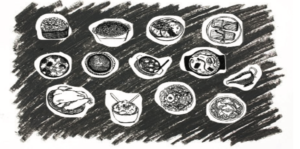Ever wonder what happens when somebody steals your Social
Security number and other personal information, and then uses it?
Sure, if you’ve seen the credit card commercial with grandma, using
an obvious voiceover, talking about her brand new hemi truck,
you’ve probably gotten a good laugh out of it, but if you have ever
known anyone who has had to deal with ID theft, you know it’s more
than ‘Here’s a new number and have a nice day.’
The Mills community should be concerned about the network
hacking a few weeks back, and for more than the inconvenient loss
of Internet and computer services for more than a day. The
administration says it’s unlikely that social security numbers were
stolen, but the server holding passwords was accessed, and though
it happened sometime over the weekend, the school was unaware of
the unauthorized access until Monday morning. This allowed the
intruders an unknown amount of time to copy what they wanted,
possibly getting social security numbers. Where is the hole in our
security that no one realized we’d been hacked until Monday?
When someone steals, and uses, your Social Security number – the
equivalent of your identity in this country – you can’t get it
back. You can get all of your credit reports, and if you’re lucky
you can get enough paperwork together to prove it wasn’t you that
set up that charge account and get the debt and the dings on your
report wiped away. And then you know what Social Security
Administration tells you? Keep an eye on your credit report. Check
it every six months for the rest of your life and hope you don’t
see any more unauthorized use. If you are unfortunate enough to
have serious abuse of your identity, they eventually consent to
give you a new number, but then they link it to your old one anyway
so the bad credit history still follows you. And what, exactly, is
the point of that?!
Numerous college administrations have been criticized lately for
their handling of confidential data, and school networks are
developing a reputation for being a wealth of easily accessible
data. Hopefully, this “little” attack will motivate Computing
Services to take a more comprehensive approach to network security,
and develop a better alert system should another hacker want
in.
Students, faculty and staff have no control over how an
administration stores their data, and we all realize computers
aren’t going anywhere. The College has a responsibility to
dependably protect our vital information and make sure that we are
virtually, as well as physically safe. They need a new plan of
defense.


